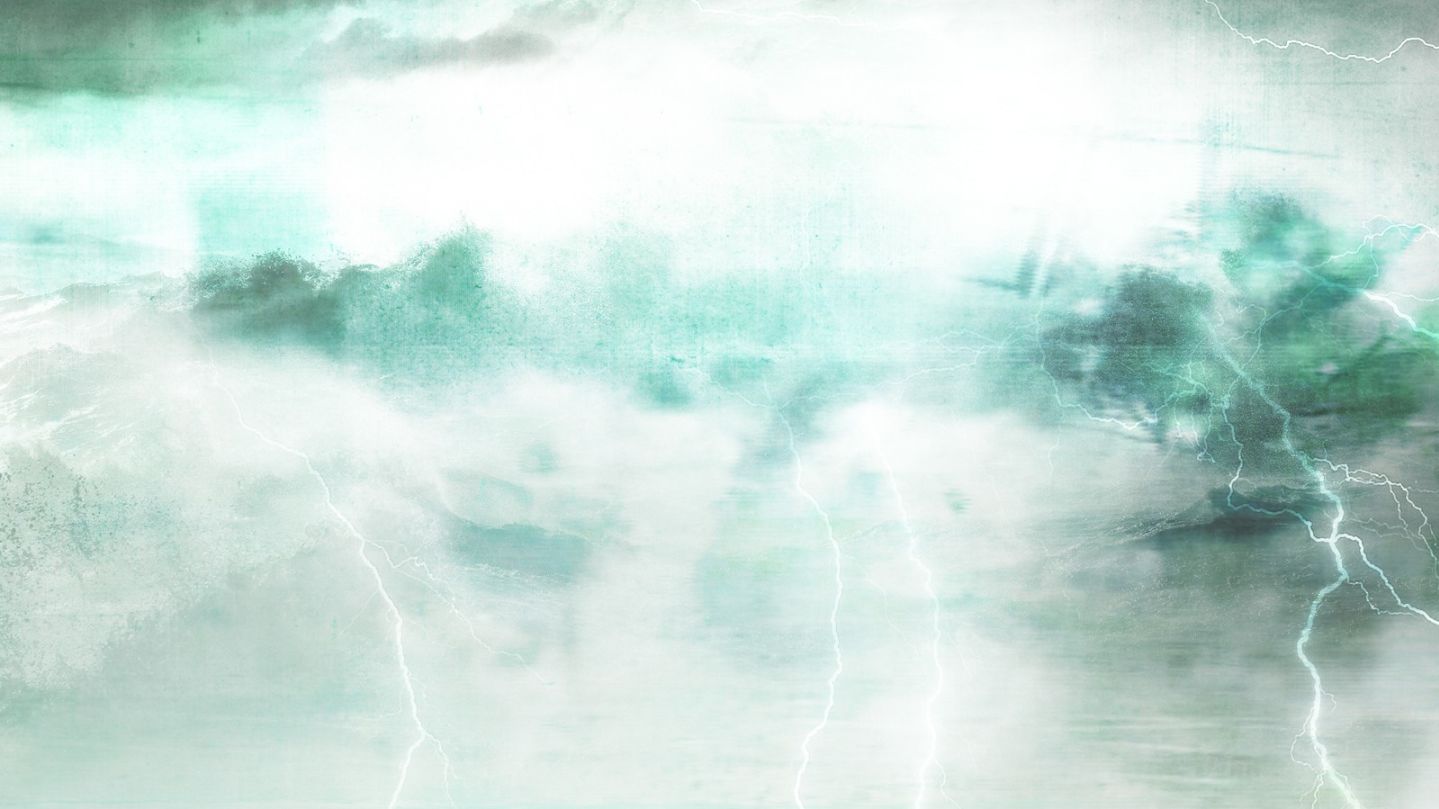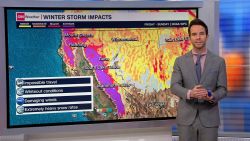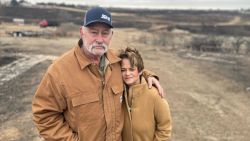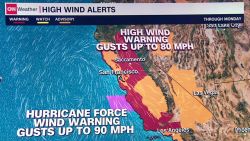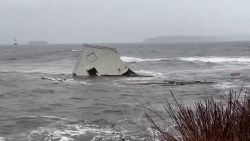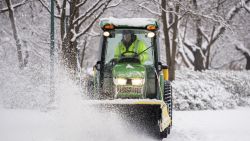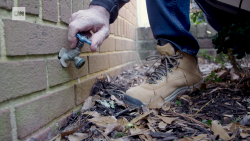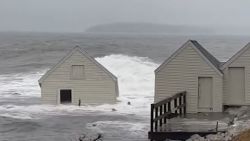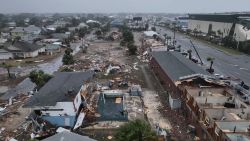Story highlights
NEW: Hurricane Joaquin is a Category 3 storm now, forecasters say
Its future path is unclear, but it could mean heavy rain for Mid-Atlantic states
CNN meteorologist says one factor in Joaquin's movement is low pressure system over Southeast
Joaquin strengthened into a major hurricane on Wednesday night, the U.S. National Hurricane Center announced.
The Category 3 storm is poised to pound the Bahamas with heavy rain and dangerous storm surges.
And the storm’s movement later this week could have flooding implications for an already drenched eastern United States. While forecasters are having a hard time figuring where Joaquin is headed, they believe the storm will continue to strengthen over the next day or so.
Joaquin’s outer bands were already splattering the southern Bahamas and Cuba with rain Wednesday night.
The storm’s center was spinning 170 miles (275 kilometers) east of the central Bahamas. Its maximum sustained winds of 115 mph (185 kph) extended 35 miles (56 kilometers) from the eye. Tropical storm force winds reached farther, up to 140 miles (220 kilometers) from the center.
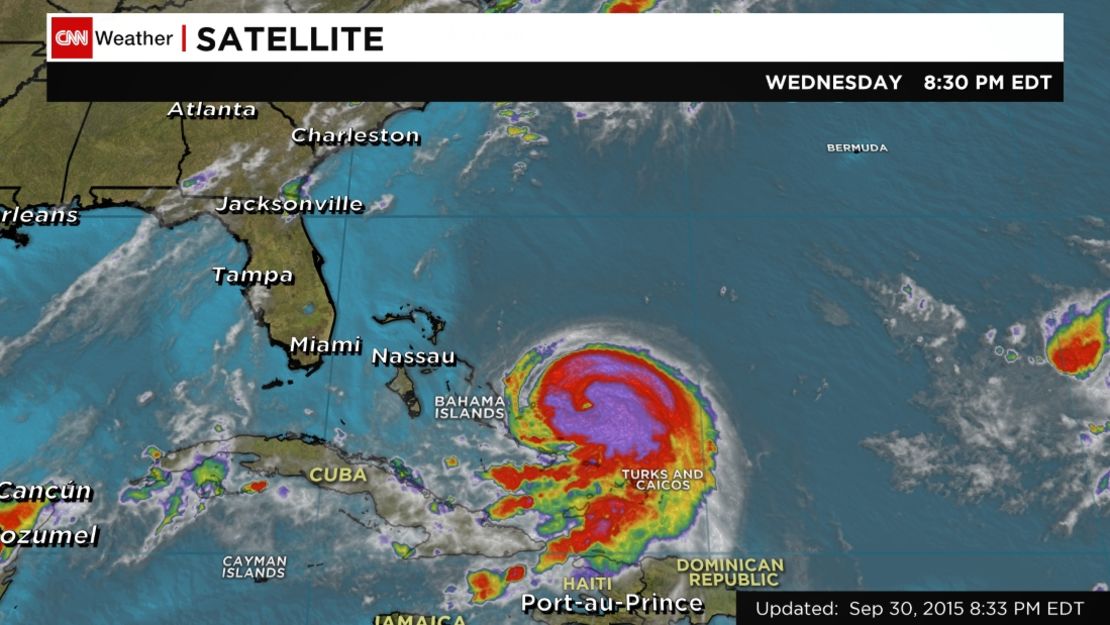
A hurricane warning was in effect for the central and northwestern Bahamas, with the storm’s center expected to be near or over the islands by Thursday before turning north, the hurricane center said.
More than 10,000 people live on the Bahamian islands most squarely in the storm’s path. Ten to 15 inches of rain could fall over much of the central Bahamas through Friday, with lesser amounts expected over the rest of the country, the center said. Isolated amounts could reach 20 inches.
“Winds are expected to first reach tropical storm strength in the warning area Wednesday night, making outside preparations difficult or dangerous,” the hurricane center said about the Bahamas. “Preparations to protect life and property should be rushed to completion.”
Hurricane Joaquin is lifting storm stocks
Rain and winds aren’t the only concerns: Dangerous storm surges – with water levels as high as 3 to 5 feet above normal tides – are possible on the Bahamian coasts.
Swells from Joaquin also will affect the southeastern U.S. coast by Thursday, potentially creating life-threatening rip currents, the hurricane center said.
A U.S. landfall?
A hurricane hasn’t made landfall in the eastern United States since Hurricane Arthur hit North Carolina in 2014. That could change with Joaquin.
Forecasters expect Joaquin to turn north after the Bahamas, but they have low confidence in predicting the path after that. Many U.S. computer forecast models predict a hit on the East Coast next week, anywhere from the Carolinas to more northern Mid-Alantic states.
One European-based model predicts the storm going out to sea instead.
“Anywhere from South Carolina all the way up to the Northeast needs to be on the lookout for this storm,” CNN meteorologist Jennifer Gray said. “There’s still a lot of uncertainty with this storm.”
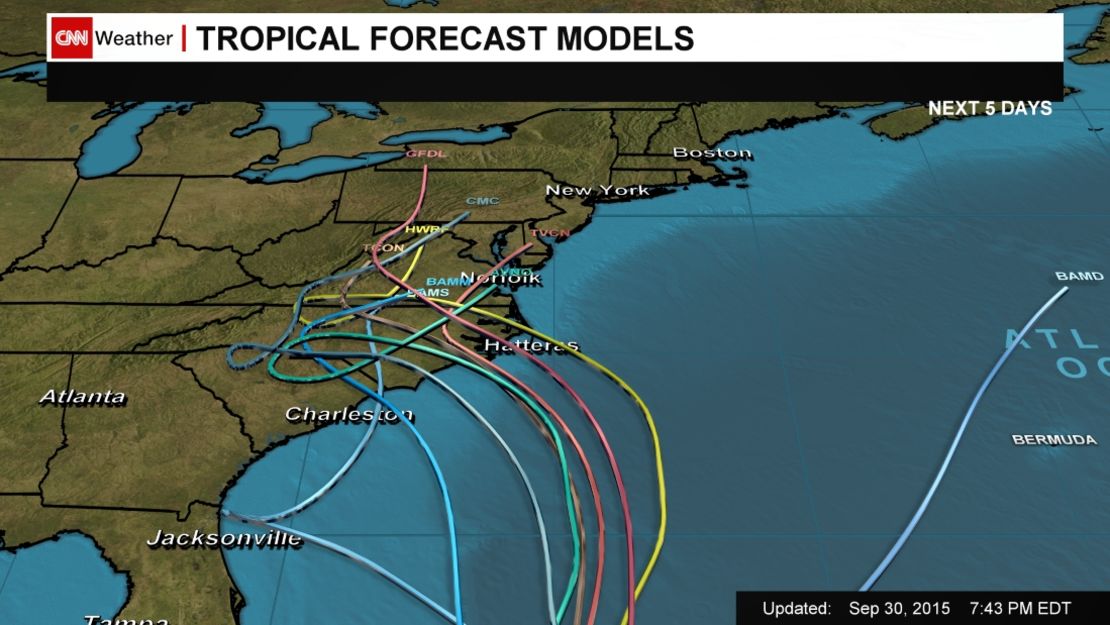
Gray said a low pressure system over the Southeast could influence how Joaquin travels northward.
Significant rain possible for Mid-Atlantic next week
Landfall or not, Joaquin at the very least could send significant rainfall to the East Coast, where some states already were dealing with flood threats from separate systems this week.
“There is so much tropical moisture, we will get 10 inches of rainfall in the Mid-Atlantic (in the next seven days) – and that’s with a miss,” CNN meteorologist Chad Myers said. “If we get a hit … that number may double.”
Heavy rains hit the Mid-Atlantic and New England this week, and 2 to 6 inches of rain were still expected to fall in New England on Wednesday.
Large portions of Vermont, New Hampshire and Maine were under flood watches or warnings Wednesday afternoon.
Flooding made some streets impassable in Portland, Maine. Several cars were stalled on one street there after their drivers tried to drive through standing water, CNN affiliate WMTW reported.
CNN’s Sean Morris, Monica Garrett and Dave Hennen contributed to this report.
